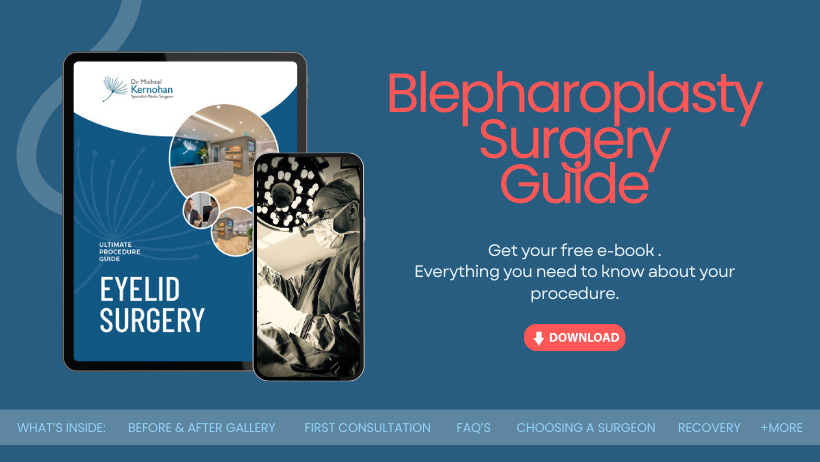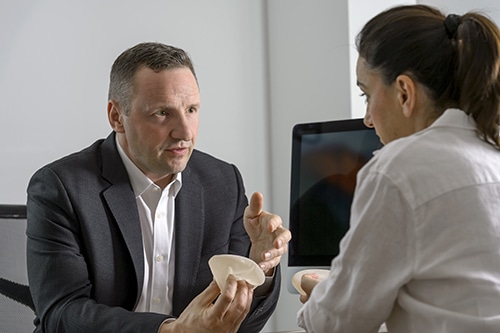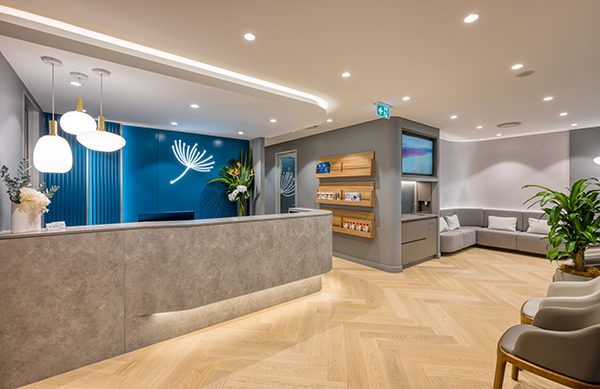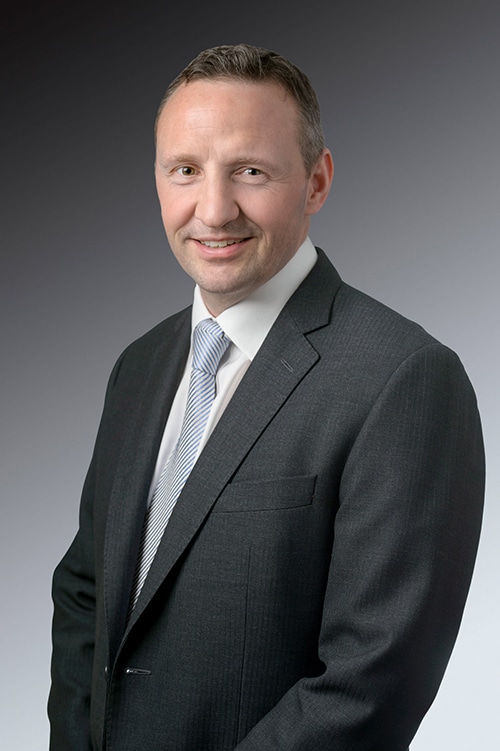Effective Treatments for Eyelid Surgery Scars
Eyelid surgery is a common procedure often sought by individuals looking to alter their appearance or improve visibility. In spite of its popularity, much like any other surgical procedure, it carries the potential for post-operative scarring. Understanding the realities and implications of eyelid surgery scars is crucial for those considering this procedure. The formation of scars is an integral part of the body’s healing process. Following surgery, your body naturally responds by producing collagen to repair the wound, leading to the formation of a scar. The appearance and severity of the scar vary depending on several factors, such as your genetic makeup, the surgical technique used, the skill of your surgeon, and your aftercare routine. This blog will discuss eyelid surgery scars, offering you more details about their nature, causes, impacts, and most importantly, the available treatment options.
Dr Michael Kernohan is a renowned Specialist Plastic Surgeon based in Sydney, New South Wales, Australia. He is recognised for his expertise in a wide range of plastic and cosmetic surgeries, including Skin Cancer treatments and surgeries related to the Breast, Body, Nose, and Face. One of the facial surgeries he offers is blepharoplasty, commonly known as eyelid surgery.
Take the Quiz
Understanding Eyelid Surgery Scars (Blepharoplasty Scars)
Eyelid surgery scars, also referred to as blepharoplasty scars, are a common aftermath of eyelid surgery. These scars generally form along the natural crease line of your eyelid, reducing their visibility when your eyes are open. However, depending on the healing process, the scars can sometimes become hypertrophic or keloid, both of which are more noticeable and may require additional treatment.
Understanding the nature of these scars is the first step to effectively managing them. While some degree of scarring is inevitable after any surgery, the location and design of eyelid surgery often result in minimal and well-concealed scars. Your plastic surgeon’s skill and the aftercare procedures you follow significantly impact the final appearance of your scars.
Common Causes and Types of Blepharoplasty Scars
The primary cause of blepharoplasty scars is the natural healing process that follows any surgical intervention. But certain factors like your genes, age, skin type, and lifestyle habits like smoking can influence the severity and appearance of these scars.
Usually the scars from eyelid surgery are fine line scars that follow the natural crease of the eyelid. But in some cases, these scars may become hypertrophic or develop into keloids. Hypertrophic scars are raised and red but confined to the area of the initial incision, while keloids extend beyond the original wound area and are often darker in colour.
Blepharoplasty scars can also become contracture scars if they pull the surrounding skin, causing tightness and potentially interfering with eyelid function. Understanding the type of scar you’re dealing with is essential to choosing the most effective treatment option.
Methods to Reduce Eyelid Surgery Scars
To reduce the appearance of eyelid surgery scars, several options are available, ranging from home remedies to medical treatments. The method you choose depends on the severity of your scars, your personal preferences, and your discussion with your plastic surgeon.
Home remedies for minimising blepharoplasty scars often involve natural ingredients known for their healing properties, like aloe vera and vitamin E. Meanwhile, medical treatments offer more intensive solutions, like laser therapy, steroid injections, and even surgical scar revision.
Home Remedies for Minimising Blepharoplasty Scars
There are several home remedies you can try to minimise the appearance of your blepharoplasty scars. These include massaging the scar, using silicone sheets or gels, and applying natural ingredients like aloe vera, onion extract, or vitamin E.
While home remedies may not completely erase your scars, they can help reduce their visibility and improve skin texture. However, always consult with your plastic surgeon before starting any home treatment to ensure its safety and suitability for your specific situation.
Click to Download Dr Michael Kernohan’s Blepharoplasty Guide

Medical Treatments for Eyelid Surgery Scars
If home remedies aren’t providing the desired results, you may want to consider medical treatments for your eyelid surgery scars. These treatments range from non-invasive procedures like laser therapy and microdermabrasion to more invasive options like surgical scar revision and steroid injections.
There is a spectrum of medical treatments available, each with its own set of benefits and considerations:
- Laser Therapy: This non-invasive procedure utilises concentrated beams of light to improve the appearance of scars. It works by removing the outer layer of skin, stimulating collagen production, and promoting the growth of new skin cells. Over time, this can lead to scars becoming less noticeable
- Microdermabrasion: Another non-invasive option, microdermabrasion involves the use of tiny crystals to exfoliate the surface layer of the skin. By removing dead skin cells and promoting the growth of new ones, the appearance of scars can be improved
- Surgical Scar Revision: For those with more pronounced scars, surgical scar revision might be an option. This procedure involves surgically removing the scar tissue and rejoining the skin in a way that might result in a less noticeable scar
- Steroid Injections: These are used to flatten raised scars, making them less prominent. The steroids are injected directly into the scar tissue, reducing inflammation and preventing the scar from becoming raised or hypertrophic
How to Prevent Excessive Scarring after Eyelid Surgery
While some scarring is inevitable, there are steps that patients can take to minimise the appearance of scars and prevent excessive scarring. Here’s a guide on how to achieve the best possible results post-surgery:
- Follow Post-Operative Instructions: Always adhere to the care instructions provided by Dr Kernohan. This may include guidelines on cleaning the incision site, applying ointments, and avoiding certain activities
- Avoid Sun Exposure: The sun’s UV rays can darken and discolour fresh scars, making them more noticeable. Protect your eyelids from direct sunlight by wearing sunglasses and applying sunscreen, even if it’s cloudy
- Avoid Smoking: Smoking can impair the healing process by reducing blood flow to the skin. This can result in more pronounced scarring. If you’re a smoker, try to quit or at least reduce your intake before and after the surgery
- Gentle Massaging: Once the wound has sufficiently healed, gentle massaging can help break down scar tissue and improve blood circulation. However, always consult with Dr Kernohan before starting any massage regimen
- Stay Hydrated: Drinking plenty of water can help keep the skin elastic and may aid in the healing process
- Eat a Balanced Diet: Nutrients like vitamin C, vitamin E, and zinc can promote wound healing and reduce the appearance of scars. Incorporate foods rich in these nutrients into your diet
- Avoid Strenuous Activities: Activities that strain the facial muscles, like heavy lifting or vigorous exercise, should be avoided in the initial weeks following surgery. Such actions can stress the incision sites and potentially worsen scarring
- Silicone Gel Sheets: These sheets can be placed over the scar to hydrate the skin and reduce the appearance of raised scars. They are especially effective for hypertrophic scars and keloids
- Stay Informed about Potential Complications: Be aware of signs of infection or complications, such as increased redness, swelling, pus, or pain. Early detection and treatment can prevent worsening of scars
- Regular Check-ups: Schedule and attend regular follow-up appointments with Dr Kernohan. They can monitor the healing process and provide interventions if they notice any abnormal scarring
FAQs about Eyelid Surgery Scar Treatment, Healing and Fading

What is eyelid surgery scar treatment?
- Eyelid surgery scar treatment refers to the various methods and procedures used to minimise the appearance of scars resulting from eyelid surgery (blepharoplasty). This can include topical treatments, laser therapy, and other medical interventions.
How long does it take for scars from eyelid surgery to heal?
- While the initial healing process after eyelid surgery typically takes a few weeks, the scars can continue to mature and fade over several months to a year. The exact duration varies depending on the individual’s skin type, the surgical technique used, and post-operative care.
Are scars from eyelid surgery permanent?
- While all surgeries result in some form of scarring, the scars from eyelid surgery are usually well-hidden within the natural creases of the eyelids. With proper care and treatment, these scars can become barely noticeable over time.
What treatments are available to reduce the appearance of eyelid surgery scars?
There are several treatments available, including:
- Topical silicone gel or sheets: These can help flatten and fade scars
- Steroid injections: Used for raised or keloid scars to reduce their size
- Laser therapy: Helps improve the texture and colour of scars
- Microneedling: Stimulates collagen production to improve scar appearance
- Chemical peels: Can help in resurfacing the skin around the scar
How can I prevent darkening or discolouration of my eyelid surgery scar?
- Protecting the scar from direct sunlight is crucial. UV rays can darken the scar, making it more noticeable. It’s recommended to use sunscreen or protective clothing and avoid prolonged sun exposure during the initial healing phase.
Is it normal for my eyelid surgery scar to be red or raised initially?
- Yes, it’s normal for surgical scars to appear red, raised, or even slightly bumpy during the initial healing phase. Over time, with proper care, the scar will flatten and the redness will fade.
When should I be concerned about my eyelid surgery scar?
While some redness and swelling are normal initially, you should contact Dr Michael Kernohan and his team if you notice:
- Excessive pain or discomfort around the scar
- Signs of infection, such as increased redness, warmth, pus, or an unpleasant odour
- The scar becoming excessively raised, itchy, or growing beyond the original surgical site (keloid formation)
- Any sudden changes in the appearance or texture of the scar
Further Reading about Eyelid Surgery with Dr Michael Kernohan
- Read Dr Kernohan’s Upper Eyelid Surgery Page
- Read Dr Kernohan’s Lower Eyelid Surgery Page
- Read Dr Kernohan’s Blog about What are Heavy Eyelids?
- Read Dr Kernohan’s Blog about Blepharoplasty vs Forehead Lift
- Read Dr Kernohan’s Blog about Solutions for Sunken Eyes
- Read Dr Kernohan’s Blog about Eyelid Surgery in Your 30s, 40s, 50s and 60s







